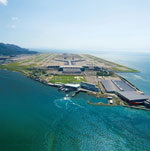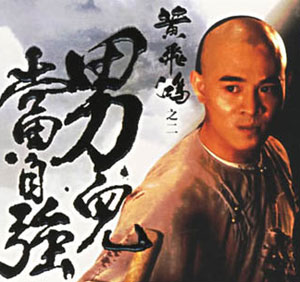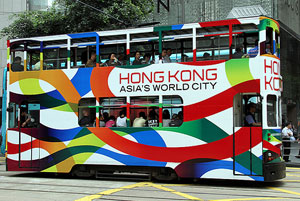
Hong Kong's international airport is...

FRONT PAGE
Site Search
About us
 

City brand Amsterdam
City brand Brasilia
City brand Bucharest
City brand Chicago
City brand Hong Kong
City brand Jakarta
City brand London
City brand Singapore
City brand Tokyo
US mayors on Twitter
Europe's top city brands
EUROCITIES branding report - a critical review
EUROCITIES on city branding
Cities into successful brand
Social media and government
Top level city domain names
Gallup's Soul of the City
Mayor of London
London City Hall

Worldwide | Elections | North America | Latin America | Europe | Asia | Africa |


























|
|
Reunification with mainland China
has not hurt the Hong Kong brand
By Andrew Stevens
26 November 2011: The reunification of the former British colony and the Chinese mainland in 1997 was seen by some as the death knell for the investment hub as a global city. Yet careful branding and a robust economic offer underpinned by legal and political stability have seen Hong Kong prosper in its declared aim to be ‘Asia’s world city’, rivalled only by Shanghai, Singapore and Tokyo. The city also serves as an exemplar in smart city growth and urban living, with high standards of design and an educated workforce.
• History
• Assets
• Brand partners
• Campaigns
History
Forged in war between the conflicting values of two empires and quickly becoming an entrepot for global trade, Hong Kong emerged as a significant possession of Britain in the Far East alongside Singapore during the nineteenth century. Its Asian geographical location and European colonial status led to its rapid emergence as an industrialised and urbanised society. The negotiated accumulation of further territory by the British in 1898, determined on military and practical grounds (graveyards and sanitation), both facilitated the colony’s economic expansion and set in train the protocol for its reincorporation back into China a century later.
The territory’s identity was often presented by its elite rulers as an outpost of late Victorian England in the Far East, replete with institutions, laws and customs to match, but the reality of everyday life among its inhabitants and traders saw the fostering of a hybrid east-west culture and experience. Its economic stages post-war were determined by manufacturing, followed by a 1980s investment boom on account of the opening of a Special Economic Zone city in neighbouring Shenzhen under the market reforms of Deng Xiaoping. The full transfer of Hong Kong to Chinese sovereignty in 1997 was agreed under the Sino-British Declaration of 1984, which created the status of Special Administrative Region (SAR) for the territory post-1997, arguably its first identity framework.
The branding imperative for the post-colonial territory became apparent with the reunification principal of Deng’s “one country, two systems”, whereupon it was imagined that Hong Kong as one of the ‘two systems’ would simply be subsumed by the mainland’s emerging nation brand. Thus the post-colonial SAR government began to work up a coherent branding strategy to guard against any decline in Hong Kong’s status as a global finance centre and world city.
 Assets Assets
While Hong Kong may now simply be one of the two systems within the one country, the retention of its economic, legal and social systems post-1997 remains at the fore of its offer. Though not blessed with optimal natural resources, save for the harbour (on which even its airport was constructed), the territory boasts a comparatively skilled workforce and can point to being the world’s 11th largest trading economy, its sixth largest foreign exchange market, 15th largest banking centre and one of Asia's top three stock markets. Some would say the city itself is its greatest asset, one of several ‘future cities’ in Asia likely to demonstrate how the rest of the world may come to live in the 21st century.
The brand strategy is guided by government economic imperatives, where Hong Kong can augment its traditional economic pillar industries (financial services, tourism, trading and logistics, and professional services) with territorial expertise in testing and certification services, medicine, technological innovation, creative industries, environmental industries and education.
• The “one country, two systems” offer is set out by the government and its branders as:
• A high degree of autonomy, with executive, legislative and judicial powers
• The rule of law upheld by an independent judiciary
• A clean, efficient administration and civil service
• The fundamental rights of residents protected by law
• Hong Kong people running Hong Kong – laws, currency, taxation system and the way of life separate from the mainland’s
• Separate immigration, customs, police and anti-corruption authorities and jurisdictions
• Hong Kong continues to participate in international forums in its own right (e.g. the World Trade Organization, the Asia-Pacific Economic Cooperation, the World Customs Organization, the Financial Action Task Force)
• Chinese and English are official languages
One arena in which Hong Kong has attained global prominence over its Asian rivals and indeed the mainland is in its film industry, which has flourished since the era of 1970s martial arts movies through to more nuanced and artistic works offered up by renowned directors today.
Successful branding is seen as integral to Hong Kong’s ranking as one of the top five global cities behind New York, London, Paris and Tokyo in the 2008 Global Cities Index (Foreign Policy).
Brand partners
BrandHK is the exclusive property and strategy of the Hong Kong Government (HKG), with the usual caveats concerning the demarcation of roles, functions and identity between it and the People’s Republic of China (PRC). BrandHK is supervised and managed by the Information Services Department, in particular the Brand Management Unit (BMU) of the External PR Division. The unit seeks to apply its consistent application and promote the brand overseas, as well as leading on the recent revitalisation process for the brand on its 10th anniversary. The 2008/09 revitalisation process, led by BMU with private agency input on brand strategy and market research, covered opinion leaders and public perceptions, both insular and external. The branders view the process as ultimately successful in that the first edition brand was defensive, while the revised version was to enhance a successful and entrenched identity. Brand traits and values were calibrated against Asian rivals Shanghai and Singapore, as well as London and New York.
The PRC Government also places great emphasis on Hong Kong as an international financial, trading and shipping centre, and its development into an international asset management and offshore, as set out in the 12th Five Year Plan in 2011. In particular, Hong Kong is envisaged as the leading financial centre of the Pearl River Delta super economic zone (which stands at 120m people), alongside Guangdong and the Macau SAR.
 Campaigns Campaigns
The Brand Hong Kong (BrandHK) campaign was worked up and then launched in 2001, later revitalised in 2010 in a process in which its basic elements – its core values, attributes, brand platform and visual identity – were updated. The campaign, led by Fleishman Hillard, is underscored by the slogan ‘Asia’s world city’, an attempt to convey and convince of its free and dynamic society and its strategic location, as well as a high quality of life profile.
The core values, developed by consultation with stakeholders and the public alike, are: free, enterprising, excellence, innovative and quality living. Hong Kong’s attributes are: cosmopolitan, secure, connected, diverse and dynamic. Research also showed that the top five core values associated with Hong Kong were progressive, free, stable, opportunity and high quality.
The visual identity of BrandHK, a familiar dragon logo, is aimed at establishing a contemporary feel by simultaneously harnessing the city’s ‘energetic modernity’ while linking to its historic past. The logo also draws in the local landmark Lion Rock, apparently to symbolise Hongkongers’ ‘can-do’ spirit. A decade on it was felt that a review of BrandHK was necessitated and the conclusions of the review argued for the retention of most of the original key elements of the brand, particularly the dragon image and the brand positioning. However, some regional branding commentators suggested the end product was somewhat underwhelming and predictable. The brand also remains silent on the emerging challenges it faces around sustainability from other key Asian green cities.
However, the Brand and its core values have become an integral part of major annual events such as the HK International Rugby Sevens, Hong Kong Tennis Classic, Hong Kong Marathon, Entertainment Expo Hong Kong, events supported by the Mega Events Fund and international events held in the city such as the 2009 East Asian Games and the 2008 Beijing Olympics Equestrian Events.
|
|

|



































